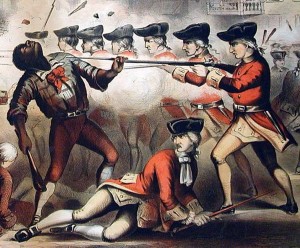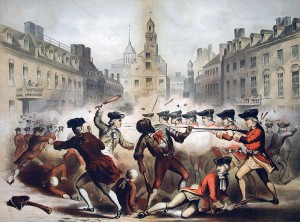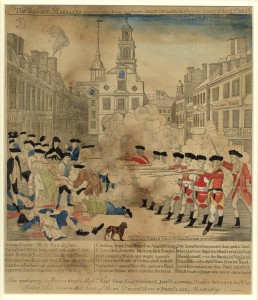This Thursday, May 12, at 7:30 p.m., James O. and Lois E. Horton will present “Liberty and Justice for All: The Civil War as Blacks’ Second American Revolution.” Directions to AAS and further information about this and other public programs are available on the AAS website.
Describing the scope of their lecture, Professor Horton commented:

“We will be talking about the connection that African Americans made between the American Revolution and the Civil War. We will discuss black people’s expectations of the Revolution, especially in New England, the extent to which their hopes were realized, and what they saw as the Revolution’s unfinished business. African Americans, under siege in the 1850s, prepared for a war they believed would fulfill the revolutionary promise, and black soldiers played a decisive role in bringing slavery to an end.” At first rejected as soldiers by the federal government, about 200,000 blacks eventually fought in the Civil War, their courageous service was instrumental to the Northern victory of the conflict.”
Items in the AAS collections provide some insight into how abolitionists, white and black, looked upon the unfinished legacy of the American Revolution. William Cooper Nell, a black abolitionist and journalist, wrote two histories of blacks’ contributions to American conflicts: Services of Colored Americans in the Wars of 1776 and 1812 [AAS online catalog record] and The Colored Patriots of the American Revolution [AAS online catalog record], both published in Boston in 1851 and 1855 respectively. In researching and publishing these experiences, Nell sought to bring attention to dozens of black men who contributed to the patriot cause but who had otherwise been forgotten. In his introduction, Nell asserted:
“Of the services and sufferings of the Colored Soldiers of the Revolution, no attempt has, to our knowledge, been made to preserve a record. They have had no historian. With here and there an exception, they have all passed away, and only some faint traditions linger among their descendants. Yet enough is known to show that the free colored men of the United States bore their full proportion of the sacrifices and trials of the Revolutionary War.”
Nell’s The Colored Patriots of the American Revolution featured Crispus Attucks, the ‘first martyr of the American Revolution,’ prominently in the frontispiece and as the first biographical sketch of the volume. Attucks, of African and Native American descent, grew up in Framingham, MA, and he was said to be a runaway slave who became a sailor and rope maker in Boston. He was also said to be a very tall, physically imposing figure. As a dockworker, Attucks became very familiar with the British Regulars who were in Boston, many of whom were working during their off-duty hours and taking away Americans’ jobs by undercutting their wages. In early March, 1770, these tensions were violently acted out between the Americans and the British. On March 5, a confrontation between townspeople and soldiers resulted in five dead and six wounded. Attucks was the first to be shot, and according to Nell’s research, was the ringleader of the townspeople.


In 1856, the year after Nell’s publication, another Boston man told Attucks’ story though a lithograph. J. H. Bufford’s lithography company began publishing “Boston Massacre, March 5th, 1770,” based on an illustration by W. L. Champney. If this lithograph looks vaguely familiar, that is no surprise – it revised the story told in Paul Revere’s “Bloody Massacre” engraving of 1770. While Revere’s engraving did not include Attucks, Champney’s illustration put him front and center. Amidst the chaos, Attucks wielded a club as he was shot by a British Regular. The only black man in the lithograph, Attucks stood bravely against the British while surrounded by white men who would eventually gain their independence from Britain. Black and white abolitionists may have hung this lithograph in their homes to remind them of the work still to be done.
James and Lois Horton have been in residence at the American Antiquarian Society for the 2010-2011 school year as the Mellon Distinguished Scholars. They are primarily working on a project titled “A Documentary History of African Americans from 1619 to the Civil War.” James Horton is the Benjamin Banneker Professor Emeritus of American Studies and History at George Washington University. Lois Horton is Professor of History Emerita at George Mason University in Virginia, where she was also on the faculties of Sociology, Cultural Studies, Women’s Studies, and African American Studies. The Hortons have co-authored numerous scholarly studies, including Slavery and Public History: The Tough Stuff of American Memory (New Press, 2006); Slavery and the Making of America (Oxford University Press, 2004); Hard Road to Freedom: The Story of African America (Rutgers University Press, 2001). Both professors have had distinguished careers in teaching and public history.
